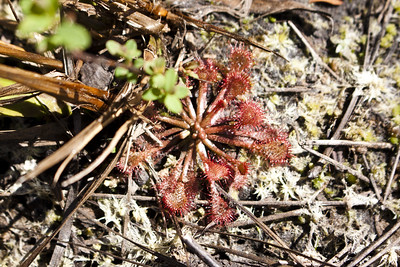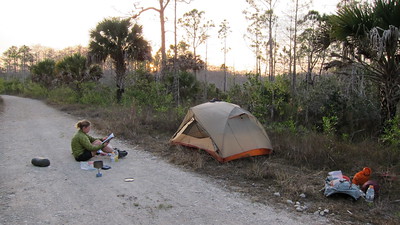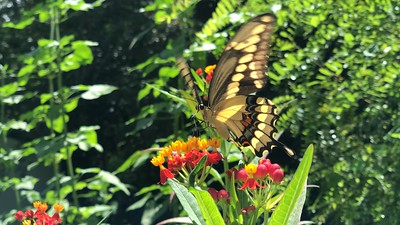Adventure Reads Part II
One post over the years that seems to have done well was my Adventure Reads post. So, I thought that it was high time to have an Adventures Reads Part II.
Thirst: 2600 Miles to Home by Heather ‘Anish’ Anderson
I’ve never had a burning desire to hike the PCT. The CDT was always what I wanted to hike next in the compendium of ultimate long distance trails. Even reading Wild didn’t really cement the desire to hike the PCT into my brain like it did to so many people who wanted to traipse in Cheryl’s footsteps. But Thirst fleshed out more of the details of the PCT for me, offering some vivid descriptions of the desert sections, the long-day struggles of hiking Heather went into as she progressed through the Sierras and into Oregon and Washington—the camaraderie she shared with folks who crossed her path along the way, it made me more interested in the PCT than I had ever been.
I wrote about the book in one of my book reports when the book came out but for those who are unaware of who Heather is, she’s most known for her 2013 self supported fastest known time (FKT) record on the PCT as a relatively unknown hiker. Since then she’s gone on to hike thousands more miles including most recently becoming the first woman to do a calendar year Triple Crown—hiking the AT, PCT, and CDT in one calendar year. At the time only 4 people had completed the feat. The logistics from travel and weather are quite complicated. But she did it! Here’s a great article if you are new to Heather and want to get an idea about her: NatGeo Adventurers of the Year.
North: Finding My Way While Running the Appalachian Trail
This book was very enjoyable and fast-paced. For those unfamiliar with Scott Jurek, he’s an ultra-runner with a long history of trail race winnings. You may know him from Eat and Run, a memoir about his running and running as a vegan. With the long distance FKT frenzy that really kicked off in the early to middle of the 2010s, Scott began eyeing an FKT of the Appalachian Trail, despite not really being a long distance backpacker. He was going after Jennifer Pharr Davis’ FKT of the AT that she set in 2011. With his wife running support for Scott, he set off north from Georgia to FKT the AT. I really loved that they alternated between viewpoints from him as a hiker/runner and from her as the support crew. It isn’t often we get to see what life is like for the support person on the other side of a supported FKT.
The Pursuit of Endurance: Harnessing the Record-Breaking Power of Strength and Resilience by Jennifer Pharr Davis
Since we’re on an FKT roll here, this one is on the same topic—hikers/runners who have set the standards of endurance on long distance trails. Jennifer takes us from Anish to Jurek and then digs even further back to when the idea of setting a record on a long distance trail even began. She chronicles people that I had heard of but new very little about (Scott Williamson) or controversial trail legends (Warren Doyle) and weaves in their stories about their feats of endurance on long distance trails. The book was not what I expected (I was thinking more of an all-round endurance book) but I ended up liking it even more because it was pretty much dedicated to those who have completed endurance records on long trails.
Becoming Odyssa: Adventures on the Appalachian Trail by Jennifer Pharr Davis
JPD has two trail memoirs of her own, the first being Becoming Odyssa about her first hike on the Appalachian Trail, which was not a speed record. It chronicles her hike as a newbie hiker fresh out of college, traveling as a solo woman. She encounters friends, creepy folks, a very disturbing situation at a shelter, but also many other wonderful circumstances. Her writing has definitely improved over the years as she’s written books (I think she has 4 under her belt now?) so this one is definitely of the freshman writing level but otherwise it is a great book to add to your trail memoir collection.
Walking with Spring: The Story That Inspired Thousands of Appalachian Trail Thru-Hikers by Earl V. Shaffer
Sad to say that this, the ultimate trail memoir, took me years to get around to reading! I remember one of the first or second shelters we were stayed at on the AT that someone there was reading this book. I may have had a vague idea of who Earl Shaffer was but I hadn’t been heavily indoctrinated into the AT culture yet. Walking with Spring is Earl’s memoir of being the first person to thru-hike the AT, which he conducted to walk off World War II. At that time the trail was in many areas in different locations than it is today, running a bit lower in valleys and sometimes along forest roads, crossing closer to towns. I recall reading that when Earl walked again later in life he was a bit irked by the relocation to ridges away from civilization because it made it more cumbersome for resupply’s. Earl’s book isn’t thick but he has many poetic paragraphs about his time hiking and you can’t help but wonder what the trail would have looked like before it became inundated with hikers.
The Stranger in the Woods: The Extraordinary Story of the Last True Hermit by Michael Finkel
This was a crazy book! A young man in the mid-1980s up and leaves his home in Massachusetts, drives to Maine, abandons his vehicle, and becomes a hermit in the woods around a lakeshore. He begins stealing bits of items from this summer community along the lakeshore, slowly building up an arsenal of items that will allow him to live a solitary existence in the woods for nearly thirty years. When you get to the part where the author describes the way he had set up to live during Maine’s harsh winters, you wonder at the fortitude he had to survive. This is one of those “Wow, I can’t believe this is real!” books that will have you keeping the page turning!
On Trails: An Exploration by Robert Moor
I loved this book when I read it. I really should re-read it again. When you first pick up this book you kind of expect it to be one thing but it really evolves into this whole other, broader world about trails—how they are formed, cultural uses, historic uses, and how ancient paths are still used to today. Moor steps into the worlds of Navajo sheep herders, traces paths of ancient Cherokee routes in the Smokey Mountains and how some of them later evolved to roads, connects with hunters as they utilize animal trails for hunting, and even heads across the Atlantic to look at mountain ranges that were once connected to the ancient Appalachians and how they could connect as part of the greater international AT. If you are into the outdoors beyond even hiking you’ll find this a fascinating book.
Fire Season: Field Notes from a Wilderness Lookout by Philip Connors
Another book I really enjoyed, Fire Season tells the story about how Connors went from being a city living guy to manning a fire tower in New Mexico for part of the year. One season turned it another and then another and before he knew it he had this wonderful background to put together this book. Part history, part natural history, the book weaves in the story of how fire suppression in the US came to be, how the native peoples used fire on the landscape before colonization, and tidbits of fascinating and sometimes sad or scary stories that he experiences while working at the fire tower. Fire towers are becoming increasingly rare to see in many areas due to better technologies—you can often find remnants of them in southern US forests and other areas around the country—but many are still actively used. Another book I highly recommend.
This Life Is in Your Hands: One Dream, Sixty Acres, and a Family Undone by Melissa Coleman
This book is part adventure, part sad family tale. If you are familiar with Elliot Coleman of Four Season Gardening fame then you will know the name Coleman. Melissa is one of Elliot’s daughters and she tells the story of her family’s involvement in the back to the land movement of the 1970s, aided by Scott and Helen Nearing. If you’ve ever looked wistfully at ‘living off the land’ this book will set you straight on some of the hard truths. In some ways it was idyllic, in other ways not so much, and of course some of the things are focused on how it affected the family itself but other aspects you know would have affected anyone doing back to the land in the 70s and even now. Tragedy strikes and from there the family dynamic and idyllic lifestyle begins unfolding. A lot of the family is still into farming but other parts of it have moved on. It’s a sad but very captivating story.
Stand Up That Mountain: The Battle to Save One Small Community in the Wilderness Along the Appalachian Trail by Jay Erskine Leutze
Focused in on far western North Carolina, very near the Tennessee border, Jay Erskine Leutze writes how while living in the area he becomes informed about a potential mountain top removal project for mining that would impact his local community in numerous ways. It then becomes an investigative story on exactly what the project is, how it is potentially violating laws, and mixes with a history of the area. Not only is this mining project going to be problematic for local residents, it is also problematic for a portion of the Appalachian Trail viewshed. With that, Leutze is able to garner more attention for the mining violations and get some strength behind the fight to stop the project. The AT is constantly working to fight projects from powerline right of ways to pipeline projects—protecting more than just the narrowing footpath is as important as the viewshed itself. All of these come together in a very page-turning book to find out what happens next and just how hard it can be to fight these types of projects.
Alright, got an adventure book I should? Recommend something to me!



2 Comments
Patrice La Vigne
I like this post idea!! I feel like I’ve read SO many books in this genre and would love to rank them all at some point. Hmmmmmm … maybe I will in 2020.
Pingback: